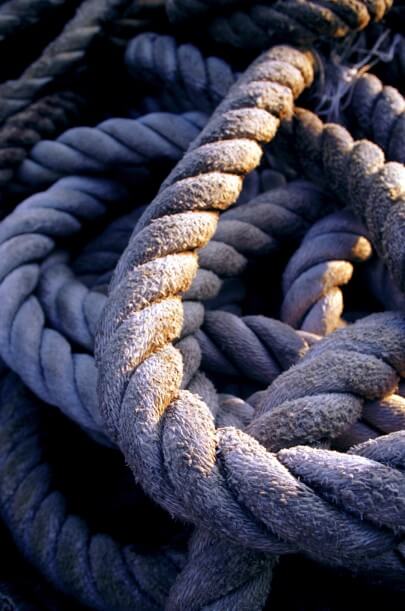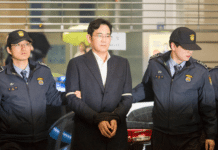Ropes, since prehistoric times, have been of importance in construction, seafaring, exploration, sports and communications. But what does a piece of rope exactly consist of and what makes it of better quality than another? The Dutch family business Van der Lee has specialised in rope making for the past 450 years and its history in the industry might even date back further than that.
The Netherlands
The Netherlands is founding member of the European Union, the OECD, and the World Trade Organisation. This country that, technically, lies under sea level, has its main industries in agriculture-related industries, metal and engineering products, electronic machinery, and equipment chemicals, petroleum, construction, microelectronics, and fishing. Its main export destinations are Germany, Belgium, France, the UK, Italy and the United States. Its GDP comprised $629.911 billion in 2006 and unemployment rose to 4.4% in 2009.
History
The traditional materials used to produce rope, are manila hemp, hemp, linen, cotton, coir, jute, and sisal. The first rope making tools were developed in ancient Egypt, whereby the materials used were mostly water reed fibres, date palms, flax, grass, papyrus, leather, or animal hair. A couple of thousand years later, the Chinese started using hemp fibres braid ropes. And so the rope making craft started spreading over Asia, India, and Europe over another couple of thousands of years. From the Middle Ages till the 18th century, ropes in Europe were constructed on rope walks. Rope walks were long buildings where the ropes were spread out in full length to be subsequently laid up or twisted together.
Around 1545, even though it might be guessed that it all started much before that date, one of the eldest family businesses in the world was established by a man called Jan Pietersz van der Lee. Jan Pietersz was the proprietor of most rope walks of Oudewater (Utrecht, The Netherlands). From this early point onwards, the rope production capacity in Oudewater never left the van der Lee hands and has today survived 14 generations. The son of Jan Pietersz (1580-1625), indeed, was the first one to inherit the property from his father. He, in turn, handed it down to his two sons Heijndrick and Gijsbert Heijndricksz van der Lee, who according to official records owned a ‘Coarse-thread ropery and ropery house with right of way and right to spin on Agterstraat in Oudewater.’. Gijsbert Heijndricksz’s three sons Adrianus, Cornelis, and Jan constitued the next generation of rope makers. Jan Gijsbertsz’s son Adrianus took over from his fathers and uncles and in 1787 Adrianus’s son Cornelis took charge of the business.
The end of the 19th century brought industrialisation to the still very traditional craft of rope making. Indeed, Gijsbert van der Lee (1819-1903) is said to have pulled the business into the modern world by introducing steam engines into the rope production. The new steam ropery was built near the ‘Hekendorp polder’. At the turn of the century, a mechanised spinning mill was built next to the steam ropery. Gijsbert’s sons Adrianus and Cornelis Gijsbertus followed into their father’s footsteps and turned the ropery into a limited company named Van der Lee.

Cornelis in turn transferred the business to his brother Adrianus and his son Gijsbert (1883- 1966). Gijsbert bought out his family in 1936, drawing the business away from sibling conflicts and the complicated division of ownership. Gijsbert’s brother Piet Van der Lee became the director of the Old Ropery. The way business was done started to change; customers needs were detected more accurately, more advertising was practiced and the steam factory in Hekendorp became a limited company in 1937.
Finally, in 1938, the Touwfabriek G. van der Lee N.V. (G. van der Lee Rope Factory Ltd.), as we know it till today, was incorporated by Gijsbert van der Lee. In 1941, the factory converted to electricity eliminating the use of the steam boilers. At this stage the factory went from being a ropery to a more complex production unit, including all types of natural fibres processing. This paid off during the Second World War, where shortage of raw material such as manila from the Phillippines and sisal from South America, would have meant great losses, had van der Lee not diversified early on.
In 1960 Wim van der Lee made old and new rope making technology meet by designing a braiding machine that could be combined with the old ropery machines. The industry, remarked a marked change in 1965 when the first synthetic yarn hit the markets, which had many times the resistance of manila, and, additionally, is impervious. The family decided to buy into synthetic fibre, which meant closing their own spinning mill.
Through importing raw material the family could now specialise and customise in their production becoming more customer oriented and flexible in their production. In 1993 a new factory was built. The product range of van der Lee now largely varies to include all kinds of ropes, yet the old craft still lives on at Touwfabriek G. van der Lee; hawsers for fisheries, water sport and replicas of ships and the ropes are still twisted on the 350-metre long ropewalk that once belonged to this historical family businesses’ founder.
Today
Today, the G. van der Lee Rope Factory Ltd. is one of the very few rope factories in the area. The factory delivers to boat and yacht builders, the Dutch and English Navy, and exports to England, Germany, Italy and the United States. Production now includes a myriad of synthetic material but due to the preserved elder machinery, more traditional production is also still possible. The van der Lee business is the oldest family business in the Netherlands, and continues to impress through its rich history and its excellent performance even in its 14th generation.
Tharawat Magazine, Issue 4, 2009










